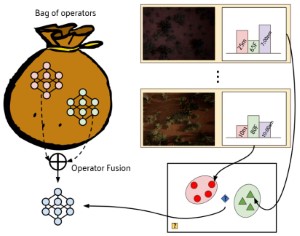
Metadata Enabled Contextual Sensor Fusion for Unmanned Aerial System-Based Explosive Hazard Detection
Proc. SPIE 11750, Detection and Sensing of Mines, Explosive Objects, and Obscured Targets XXVI, 2021

Abstract
Numerous real-world applications require the intelligent combining of disparate information streams from sensors to create a more complete and enhanced observation in support of underlying tasks like classification, regression, or decision making. An often overlooked and underappreciated part of fusion is context. Herein, we focus on two contextual fusion challenges, incomplete (limited knowledge) models and metadata. Examples of metadata available to unmanned aerial systems (UAS) include time of day, platform/sensor position, etc., all of which have a potentially drastic impact on sensor measurements and subsequently our decisions derived from them. Additionally, incomplete models limit machine learning, specifically under-sampling of training data. To address these challenges, we investigate contextually adaptive online Choquet integration. First, we cluster and partition the training metadata. Second, a single machine learning model is trained per partition. Third, a Choquet integral is learned for the combination of these models per partition. Fourth, at test/run time we compute the degree of typicality of a new sample to our known contexts. Fifth, our trained integrals are decomposed into a bag of underlying aggregation operators and a new contextually relevant operator is imputed using a combination of the metadata clustering and observation statistics of the integral variables. This process enables machine learning model selection, ensemble fusion, and metadata outlier detection, with subsequent mitigation strategy identification or decision suppression. The above ideas are demonstrated on explosive hazard detection using surrogate data simulated by the Unreal Engine. In particular, the Unreal Engine is used because it provides us with flexibility to explore the proposed ideas across a range of diverse and controlled experiments. Our preliminary results show improved performance for fusion in different contexts and a sensitivity analysis is performed with respect to metadata degradation.
Media